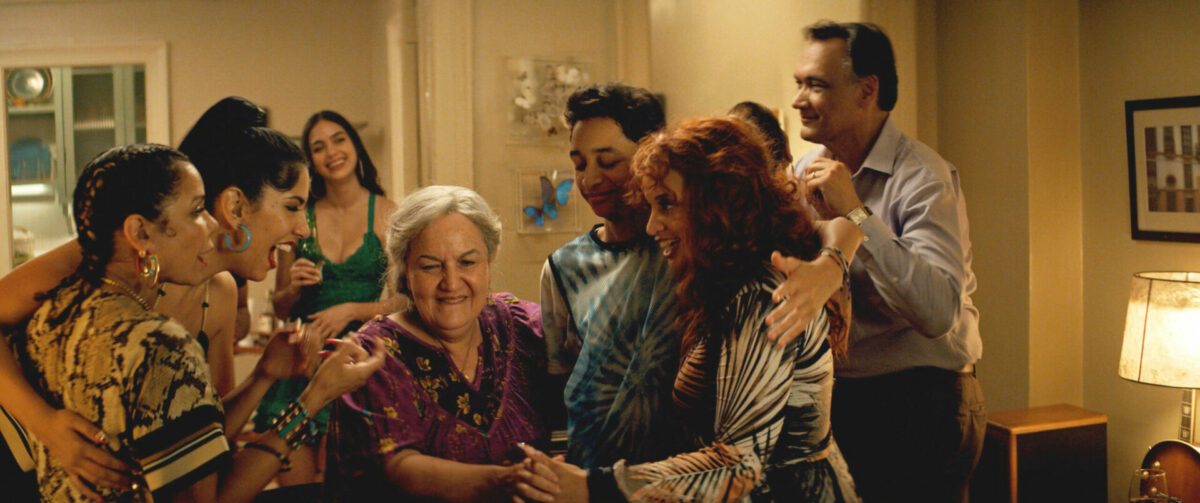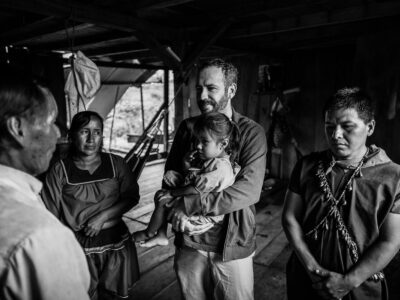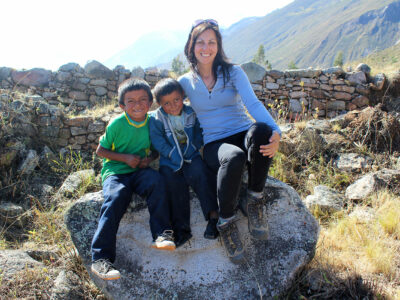Over the last few years, the small and big screens have showcased Latino culture and the community in ways never before seen—from Netflix’s “Gentefied” exploring the story of three Mexican American cousins in Los Angeles to a reboot of the sitcom “One Day at a Time” featuring a Cuban American family. Questions, however, remain. Has Latino representation improved in the mass media? What still needs to be done to create a more diverse voice?
Sombrilla Magazine spoke with John Phillip Santos, a distinguished scholar in Mestizo Cultural Studies at the UTSA Honors College, about Latino representation, identity and how the media tells the culture’s story. Santos, a San Antonio native, has helped create a platform for exploring mestizo cultural identity at the institution.
In the last year, we’ve seen the movies “In the Heights” and Disney’s “Encanto,” as well as Netflix’s “Selena: The Series.” Why this sudden wave of Latino representation?
There have been instances of bursts I would say. I think the larger issue remains relative to the visibility of Latinidad, especially Chicanx characters, ambiente and ideas. Selena is a very well-known figure and widely celebrated, so I think of that story as being safe ground for certain types of Latino representation in the mass culture. There’s also a celebrated podcast (called “Anything for Selena”) about her enduring appeal.
In terms of storytelling, lack of representation on issues related to poverty, racism, the struggles to achieve educational excellence and issues related to substance abuse and violence affecting our communities are only scantily treated. Where are the Latino ideas programs, philosophical and literary Chicanx cultura?
There are still some struggles like these to be addressed, but I think shows like “Selena: The Series” and Lin-Manuel Miranda representing Latinos and our culture are very hopeful signs.
You worked in the industry as a writer, filmmaker, producer and journalist, so you’ve seen it all firsthand. Do you think Latino representation has improved in the media?
There’s a whole lot of work that still needs to be done. It makes a difference when someone like a reporter has a background in certain areas. It allows us to hear an authentic voice on what’s taking place. A very good example is a younger reporter at The New York Times named Edgar Sandoval. He is from the Valley and has been writing amazing pieces on the COVID epidemic in the Valley. In my many years of reading The New York Times, I’ve never seen a reporter use Tex-Mex or Valley Spanglish in a way that wasn’t objectified.
In one of Sandoval’s stories, a son, whose mother had died from COVID, was talking to the funeral director and said, “peine la bien,” or “comb her well.” He blended that mix of Spanish and English that’s familiar to all of our ears in a place like San Antonio or South Texas. These are some things people might find insignificant, but for those of us invested in the hope for a new way of making media, it makes a huge difference. For the most part, these kinds of nuanced true Chicanx voices are still excluded from the mediasphere.

What nuanced representation of Latino multiracial identities—such as mestizo— have you seen in mainstream arts and entertainment?
At the time of the early 20th century, there was a big movement out of Mexico by artists, writers and intellectuals to celebrate the mestizo heritage of Mexico. The person who is most associated with this is philosopher Jose Vasconcelos. He turned the derogatory representation of the mestizo and proclaimed people of Mexico as the “raza cósmica” or the cosmic race.
The term mestizo is not commonly used in the media. My primo, Robert Santos, who was just nominated to head the Census Bureau, talks about how he writes in mestizo as a qualifier when checking boxes relating to race and identity in the Census. It’s not something that is officially in the Census yet, but I expect in the very near future we will see the Census include the term mestizo.
A lot of your work has focused on culture and ethnic identity. Why are these topics so relevant today?
Growing up between San Antonio and Northern Mexico, I didn’t romanticize the story of the founding fathers, but instead nurtured a curiosity about the stories of the Aztec and the Mayan civilizations. But I was never taught about them in school, never invited to understand how their legacy related to me. That kind of education was reserved for teaching me about ancient Greece, ancient Rome.
My colleague, David Carrasco, from Harvard University talks about what he calls “the Aztec moment.” It’s when you, as a Mexican American, make your first trip to Mexico City and see what was never taught to you about our culture. My work has been about trying to tell those stories.
As a documentary filmmaker, a lot of my stories around the world were about the poor, and I realized there was another aspect of our Mexicanidad that connected us to the struggles of the poor everywhere. That gave me a very powerful understanding— the Mexican struggle wasn’t just what we had to suffer through. It was part of a worldwide struggle of the marginalized. It turns out the future, like the past and the present, is about migration and mestizaje. It’s about our deepest humanity, without borders.


